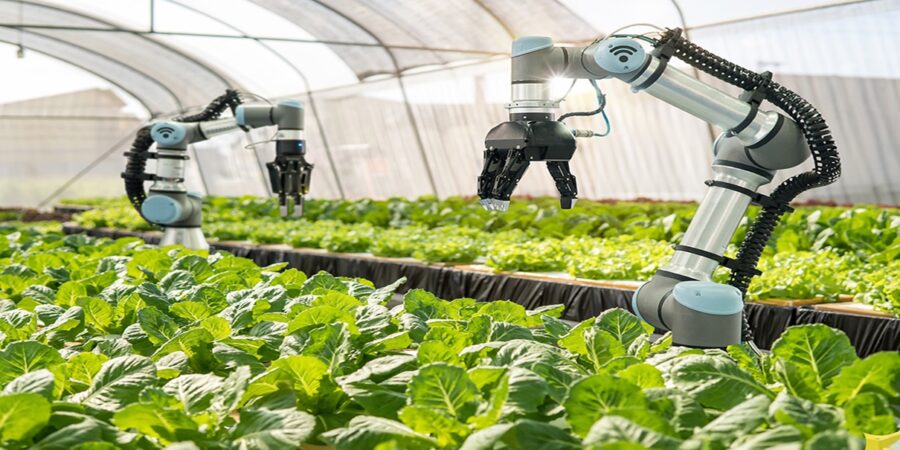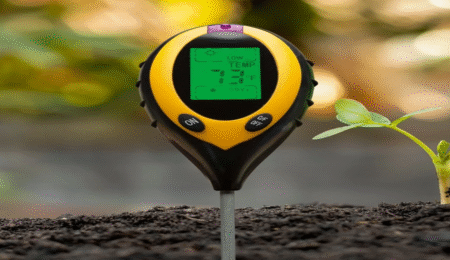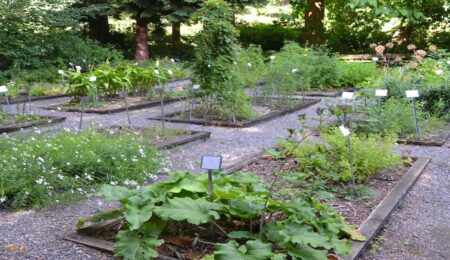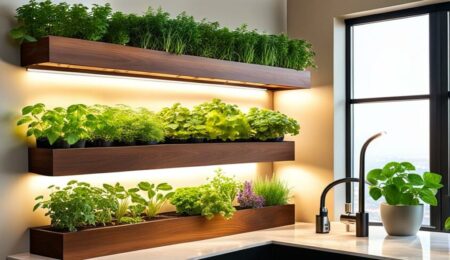The Future of Growing Smart Greenhouse Automation for Home Gardeners
For home gardeners, keeping plants thriving year-round can feel like an uphill battle. Too much heat, not enough light, or a hectic schedule can quickly turn a vibrant garden into a struggle. That’s where greenhouse automation comes in—bringing smart technology that makes gardening easier, more efficient, and far more productive.
With rising food costs and the growing impact of climate change, growing your own produce has never been more practical—or more important. Thanks to smart greenhouse systems, everyday gardeners can use automated irrigation, temperature controls, humidity sensors, and AI-powered plant monitoring—all accessible from a smartphone. And the best part? These tools are becoming more affordable and easier to use than ever.
In this post, we’ll dive into how greenhouse automation is revolutionizing home gardening. From the basics of how these systems work to the latest advancements in sensors and AI, you’ll learn how to create a smarter, greener garden—without needing to tend to it every single day.
Understanding the Basics of Smart Greenhouse Automation
At its core, a smart greenhouse automation system uses sensors, controllers, and software to maintain ideal growing conditions for plants. These systems can monitor environmental variables such as temperature, humidity, light intensity, and soil moisture—and automatically adjust fans, irrigation, grow lights, or ventilation systems as needed.
For example, if the temperature inside your greenhouse rises above optimal levels for your tomatoes, the system can trigger a fan or open a vent. If the soil starts drying out, it can start a watering cycle without your intervention. These capabilities not only reduce manual labor but also ensure plants get consistent care, leading to better yields and healthier growth.
The technology behind these systems is similar to what powers smart homes. You’ll find Wi-Fi-connected devices, app-based controls, and even AI algorithms that learn from your gardening habits. For beginners and seasoned growers alike, this represents a shift from reactive to proactive gardening.
Why Smart Greenhouse Systems Are Gaining Popularity
Over the past few years, smart greenhouse automation has moved from high-tech commercial farms into residential backyards—and the timing couldn’t be better. With more people focusing on sustainability, self-sufficiency, and healthy eating, interest in home gardening has surged.
What makes these automation systems appealing is their ability to maximize limited space. In small urban environments where growing conditions are less than ideal, a smart greenhouse setup can create a microclimate tailored to specific crops. This means home gardeners can grow lettuce in summer, strawberries in spring, and even herbs in the dead of winter—without worrying about weather extremes or seasonal changes.
Additionally, smart greenhouses offer long-term cost savings. Although the initial setup may require an investment, automation reduces water waste, prevents crop failure, and minimizes energy use through precise climate control. Some systems can even be powered by solar panels, making them more eco-friendly.
The rise of DIY greenhouse kits and user-friendly apps is also making it easier for non-tech-savvy individuals to jump on board. As demand grows, so does the innovation in the industry, which means better systems at lower prices.
Key Features and Technologies in Modern Greenhouse Automation
Today’s greenhouse automation systems come packed with high-tech features that make plant care almost effortless. Let’s break down some of the core technologies and how they benefit home gardeners.
First, there are environmental sensors that track conditions like temperature, humidity, and CO₂ levels. These sensors constantly feed data to a central system that can make adjustments in real-time. Paired with automated actuators, you can control windows, fans, or vents based on sensor feedback.
Next is irrigation automation, which often includes soil moisture sensors and programmable drip systems. These tools ensure plants get the right amount of water at the right time, reducing waste and the risk of overwatering.
Lighting control is another important feature, especially in areas with limited sunlight. With smart grow lights, you can extend daylight hours or simulate seasonal changes to encourage flowering or fruiting. Many systems now use LED grow lights that are energy-efficient and customizable based on the plant’s growth stage.
Some advanced systems incorporate machine learning and AI. These platforms analyze plant behavior, environmental patterns, and even weather forecasts to make predictive adjustments. This level of smart gardening is particularly useful for people who want to grow delicate crops or optimize for yield.
Lastly, remote monitoring and mobile integration allows you to check your greenhouse from anywhere. Whether you’re on vacation or just busy with work, you can receive alerts, review plant data, and make adjustments right from your phone.
How Home Gardeners Are Using Smart Greenhouses
To see how smart greenhouse automation plays out in real life, consider Emma, a home gardener in Oregon. Tired of losing crops to unpredictable frosts and forgetting to water her plants, she installed a budget-friendly automation system that included humidity sensors, grow lights, and an app-controlled irrigation setup.
Within one season, Emma saw a dramatic improvement in her garden’s health and productivity. She was able to grow basil, spinach, and even strawberries throughout the winter months. By monitoring her greenhouse from work and adjusting the settings on the fly, she took the guesswork out of gardening and actually started enjoying it again.
Emma’s story isn’t unique. Many urban dwellers and suburban homeowners are using smart greenhouses to grow everything from herbs and greens to exotic plants that normally wouldn’t survive their climate. It’s giving people the freedom to garden sustainably and successfully, regardless of their experience level.
With community gardening projects and local food movements on the rise, these systems are also finding their way into schools and neighborhood initiatives. The hands-on learning and data-driven insights provide a valuable educational component for young gardeners.
Challenges and Considerations When Automating a Home Greenhouse
While smart greenhouse automation offers numerous benefits, it’s not without its challenges. First and foremost is the initial cost. Depending on the size of your greenhouse and the complexity of your system, the setup can range from a few hundred to several thousand dollars. However, many systems are modular, meaning you can start small and upgrade over time.
Technical know-how is another barrier for some gardeners. Setting up Wi-Fi-enabled sensors and configuring automation rules can be intimidating. Fortunately, many companies now offer plug-and-play systems with user-friendly interfaces and excellent customer support. Some even come with pre-configured settings for common crops.
Power reliability is another factor to consider. Smart systems rely on electricity, so it’s important to have a backup power source or a solar panel integration if you live in an area prone to outages.
Lastly, security and data privacy may be concerns if your greenhouse system connects to the internet. Always choose reputable brands and secure your network with strong passwords and updated firmware.
Despite these challenges, the benefits far outweigh the hurdles for most home growers—especially when you consider the long-term productivity gains and peace of mind.
What the Future Holds for Home Greenhouse Automation
Looking ahead, the future of greenhouse automation for home gardeners looks bright and exciting. As AI becomes more advanced and IoT (Internet of Things) devices become more affordable, we’ll see even smarter, more connected systems entering the market.
One trend to watch is the integration of voice control through smart assistants like Alexa or Google Home. Imagine simply saying, “Turn on the grow lights,” or “Check the soil moisture,” and getting instant feedback.
Another emerging technology is computer vision, where cameras and AI algorithms visually monitor plants for signs of disease, pests, or growth patterns. This allows gardeners to act before a problem gets out of hand, saving crops and increasing yields.
We’re also seeing more interest in blockchain-based traceability, which could be useful for community greenhouses or local growers who want to track and verify the origin of their produce.
Finally, open-source gardening platforms are on the rise. These tools let gardeners share data, optimize growth settings, and collaborate on improving crop outcomes—all while building a global network of green thumbs.
As these innovations continue to evolve, smart greenhouses will become an essential part of urban farming, food security, and sustainable living.
Conclusion
Greenhouse automation systems aren’t just flashy tech—they’re a game-changer for home gardeners. By managing temperature, water, light, and other essential factors, these systems create the perfect growing conditions, increasing productivity while minimizing waste.
As we’ve seen, smart greenhouse technology is evolving rapidly, becoming more affordable, user-friendly, and sophisticated. Whether you’re a passionate gardener, an urban grower, or just someone who wants fresher, tastier produce with less hassle, investing in these innovations can completely transform your gardening experience.




Leave a Reply